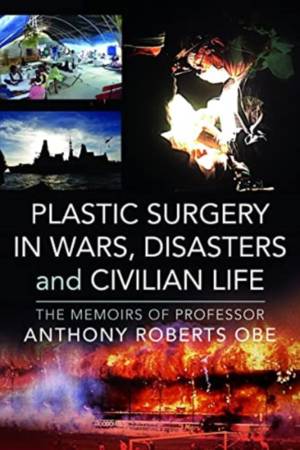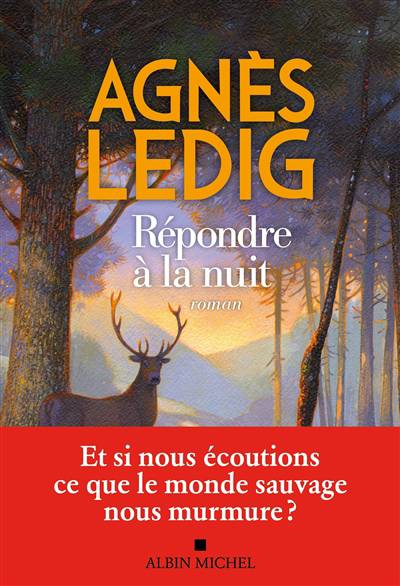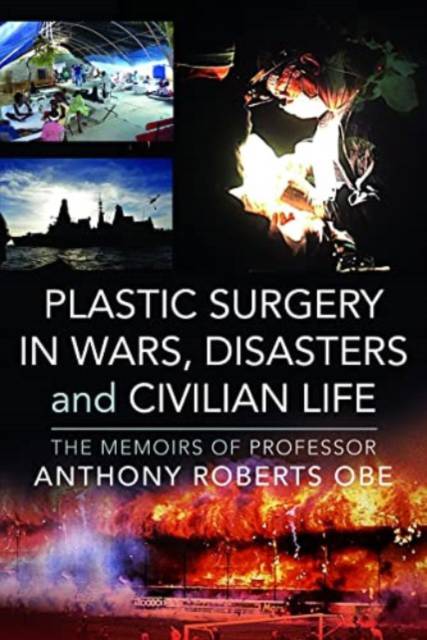
En raison d'une grêve chez bpost, votre commande pourrait être retardée. Vous avez besoin d’un livre rapidement ? Nos magasins vous accueillent à bras ouverts !
- Retrait gratuit dans votre magasin Club
- 7.000.000 titres dans notre catalogue
- Payer en toute sécurité
- Toujours un magasin près de chez vous
En raison de la grêve chez bpost, votre commande pourrait être retardée. Vous avez besoin d’un livre rapidement ? Nos magasins vous accueillent à bras ouverts !
- Retrait gratuit dans votre magasin Club
- 7.000.0000 titres dans notre catalogue
- Payer en toute sécurité
- Toujours un magasin près de chez vous
Plastic Surgery in Wars, Disasters and Civilian Life
The Memoirs of Professor Anthony Roberts OBE
Anthony Roberts
Livre relié | Anglais
39,45 €
+ 78 points
Description
The specialty of plastic surgery was developed and named by Sir Harold Gillies following his work between the two world wars reconstructing severely damaged servicemen from the First World War. Sir Harold went on to inspire and train other surgeons from around the world. Among them was his cousin Sir Archibald McIndoe, who in the Second World War set up the unit at East Grinstead Hospital which looked after severely burned airmen and some other servicemen. The airmen themselves set up the famous Guinea Pig Club which gave enormous social and often financial support to the severely injured.
After the Second World War specialized burn units were created throughout the UK, including one at Stoke Mandeville Hospital, where Anthony Roberts served. After the number of war injuries had reduced, the burn unit for all three services was set up at RAF Halton, a few miles from Stoke Mandeville. A close relationship between the hospitals developed which led to military surgeons being posted to Stoke Mandeville for training in the care of burns and an introduction to plastic surgery.
Most doctors will never be involved in a disaster during their working lives. Anthony Roberts was involved in treating casualties from the Bradford City football stadium fire in 1985 that claimed 56 lives and resulted in hundreds more being injured, many of them with severe burns. It had a major effect on him, and on all those involved. It started his appearances on the media and his overseas visits to other countries to talk about it. And subsequently he was asked to join and to lead other international efforts to provide help. He led the first British team from Stoke Mandeville that gave aid in Sarajevo during the war. He returned several times and has also given aid in three other war zones and six major disasters.
Because of this involvement in all these situations Professor Roberts taught junior trainee surgeons from the three British services and those of several foreign countries. As well as his military involvement, Anthony Roberts spent sixteen years working with the Royal Protection Group at State occasions, and thirty years working as a motor racing track doctor including at Formula One level, providing immediate and vital treatment to drivers who suffered serious injuries and burns following accidents on the track and to spectators.
There have been enormous changes in the specialty over the past fifty years and a detailed view of these is given in an absorbing account of this life-enhancing surgery by one who served on the frontline in difficult and dangerous situations around the world.
After the Second World War specialized burn units were created throughout the UK, including one at Stoke Mandeville Hospital, where Anthony Roberts served. After the number of war injuries had reduced, the burn unit for all three services was set up at RAF Halton, a few miles from Stoke Mandeville. A close relationship between the hospitals developed which led to military surgeons being posted to Stoke Mandeville for training in the care of burns and an introduction to plastic surgery.
Most doctors will never be involved in a disaster during their working lives. Anthony Roberts was involved in treating casualties from the Bradford City football stadium fire in 1985 that claimed 56 lives and resulted in hundreds more being injured, many of them with severe burns. It had a major effect on him, and on all those involved. It started his appearances on the media and his overseas visits to other countries to talk about it. And subsequently he was asked to join and to lead other international efforts to provide help. He led the first British team from Stoke Mandeville that gave aid in Sarajevo during the war. He returned several times and has also given aid in three other war zones and six major disasters.
Because of this involvement in all these situations Professor Roberts taught junior trainee surgeons from the three British services and those of several foreign countries. As well as his military involvement, Anthony Roberts spent sixteen years working with the Royal Protection Group at State occasions, and thirty years working as a motor racing track doctor including at Formula One level, providing immediate and vital treatment to drivers who suffered serious injuries and burns following accidents on the track and to spectators.
There have been enormous changes in the specialty over the past fifty years and a detailed view of these is given in an absorbing account of this life-enhancing surgery by one who served on the frontline in difficult and dangerous situations around the world.
Spécifications
Parties prenantes
- Auteur(s) :
- Editeur:
Contenu
- Nombre de pages :
- 224
- Langue:
- Anglais
Caractéristiques
- EAN:
- 9781399068482
- Date de parution :
- 20-04-23
- Format:
- Livre relié
- Format numérique:
- Genaaid
- Dimensions :
- 155 mm x 234 mm
- Poids :
- 542 g

Les avis
Nous publions uniquement les avis qui respectent les conditions requises. Consultez nos conditions pour les avis.






